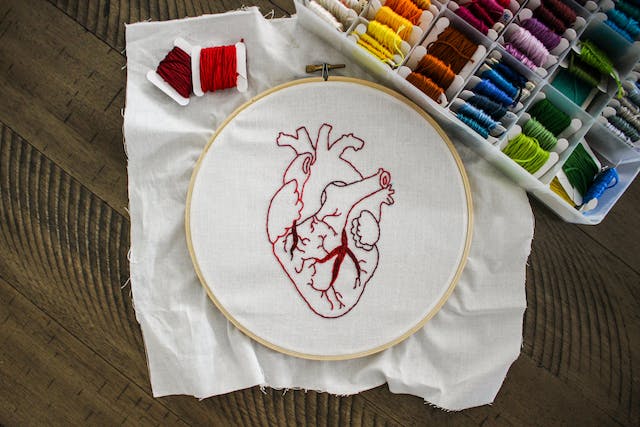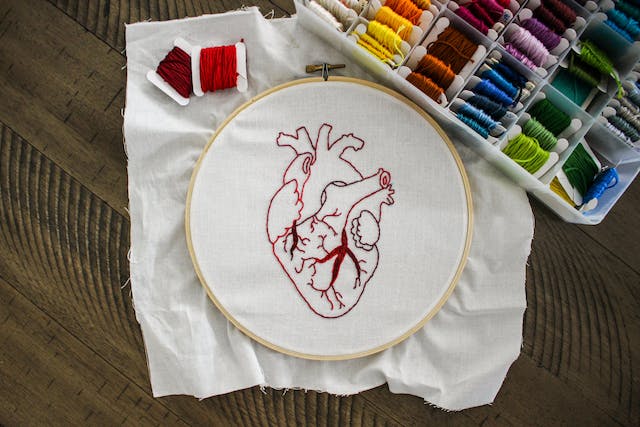
If you think embroidery is old fashioned, think again. Embroidery has evolved into a powerful tool for brand marketing and works wonders for visibility. Dive in and explore the trajectory of this creative craft and reveal the secrets of its astounding marketing potential.
The Legacy of Embroidery
Before delving into its modern potency, you should consider the roots of embroidery. Unique to diverse cultures worldwide, it was more than mere decoration. It was a storytelling tool, an emblem of status, even an investment. Fast forward to today; it’s preserved these symbolic roles.
From individual artisans to tech-driven industries, embroidery has staged a grand entry into the business world. What started off as a thread and needle has metamorphosed into professional machines churning out bespoke designs. And there lies the creative gist – translating branding ideas into tangible embroidered art forms.
Embroidery and Branding
The commercial world brims with brands vying for attention. Amidst this chaos, you need something distinctive and lasting to stand out – enter skilled talent such as Shop Strange Embroidery in Boise that make a memorable imprint on every consumer’s mind.
Lending depth and texture that no print can match, embroidery conveys premium quality like nothing else. Brands adopting embroidered logos or taglines on their merchandise like polo shirts or promotional wear ensure their identity stays ingrained indelibly with each stitch.
Benefits of Embroidered Logos
You may wonder why you should add the extra cost of embroidered logos. Look beyond cost for long-term gains: they’re resilient, lasting as long as the fabric and radiating a high-quality aura that elevates perception of your brand.
Moreover, it’s not limited to apparel – promotional products like bags, caps or towels embrace this trend. Whether used internally for uniformed staff or externally for customers, embroidered logos strike where most needed – raising continuous brand visibility.
Choosing the Right Materials
Quality embroidery begins with quality materials. The fabric backup commonly known as stabilizer prepares your canvas for its transformation. Aim for the perfect balance; a too-light stabilizer risks messy designs while heavy ones make your fabric stiff and uncomfortable.
Equally crucial is thread selection: Polyester, cotton or rayon? While all might work, assess based on durability, color vibrancy and compatibility with your fabric. Remember, you want nothing less than perfect for putting your brand on view.
Digitalization in Embroidery
Thanks to technology, digitization brings precision and scale to embroidery. Modern machines can be programmed with exact designs which they replicate flawlessly – stitch by stitch. What’s more? They can process bulk orders in incredible time!
Digitizing also enables intricate designs and color nuances that manual methods couldn’t master – giving you much-needed creative flexibility. Appreciating this feature tests your comprehensive understanding of your target audience’s preferences, so choose wisely!
Embroidery Technique Selection
Your choice of technique can dramatically alter your embroidered product’s aesthetic appeal. Do you fancy simple stitches or prefer elaborate effects like 3D puff or emblem patches? Your selection should mirror your brand style perfectly.
Beyond visual appeal, consider the practical aspect. Heavily stitched 3D effects may not fare well on thin materials like silk but are awesome on caps or jackets. Select a technique that doesn’t just please the eyes, but functions seamlessly too.
Designing for Embroidery
Remember, it’s not about copying your logo directly onto fabric; it’s about adaptation for the medium. Understand that embroidery involves shapes, lines and textures fundamentally different from those of print graphics. Hence, some aspects of your designs might need tweaking to translate efficiently into stitches.
Talented designers who specialize in this field understand these nuances. They’ll visualize your design in an embroidered rendition implementing fonts translating well into stitches and solid colors over gradients. The result? Immaculate designs your audience won’t easily forget.
Embroidery Color Selection
The color selection goes hand in hand with designing for embroidery. With an unlimited spectrum of shades and variations available, choosing the right colors can make or break your design.
Consider factors like brand color palette, target audience preference, cultural relevance, and more when selecting colors. Remember that contrast is essential- your embroidered design needs to stand out from the fabric and be easily discernible from a distance too.
Embroidered Puns and Marketing
Puns or embroideries with snappy text and humorous twists are rising in trends. They offer a refreshing way to connect with the audience, particularly those who appreciate the cleverness of pun-filled humor.
These adorn shirts, caps, bags, cushions and more. Brands employing such tactics can entice the audience towards these quirky products, simultaneously ensuring their logo/brand name stitched along attracts repeated attention.
Innovation in Embroidery Marketing
What works for one brand might not yield the same results for another. So, it’s imperative to innovate while strategizing your embroidery marketing plan.
Fusing traditional techniques with modern methods may garner increased attention. Implementing glow-in-the-dark threads or using heat activated color-changing threads could upgrade your embroidered designs, providing that extra intrigue factor that sets your brand apart from competitors.
Potential Embroidery Challenges
Despite its many advantages and incredible potentiality, embroidery also comes with its own set of challenges. One of the primary issues is the cost involved – professional embroidery services might seem steep compared to conventional printing services.
Hence, businesses need to calculate these expenses against the achieved benefits wisely. Consider durability and customers’ perception of value when making this assessment.
Social Responsibility in Embroidery
As a brand, it’s essential to acknowledge social responsibility. Employing sustainable practices in your embroidery process can have multiple positive impacts – contributing to the environment while appealing to an eco-conscious audience.
Consider incorporating organic cotton threads or eco-friendly fabric dyes. If cost effective, you can also source materials from ethical sources or work with manufacturers abiding by fair trade practices.
Maintaining Quality in Embroidery
Maintaining uniform quality in all embroidered items is quintessential for upholding your brand image. Material selection, fine-tuning designs for embroidery, choice of thread and more determine the result.
Working with professional, experienced service providers who use state-of-the-art technologies and employ skilled artisans will help ensure the consistency of quality and guard your brand’s credibility.
Rising Popularity of Embroidery
Embroidery has gone beyond being a homecraft hobby or an exclusive luxury item. Its charm and aesthetic appeal fuse into regular everyday wear and promotional products serving dual purposes- fulfilling fashion trends while subtly marketing brands.
Coupled with personalization trends where customers fancy custom-designed merchandise – be it initials on polos or customized quotes on bags, embroidery’s popularity is poised to peak further.
Embroidery Marketing Tactics
Sharpening your strategy to make the most of embroidered marketing takes sound understanding of your target audience, creativity, patience, and flexibility – being ready to adapt as per evolving trends.
Whether it’s a cool slogan or minimalistic logo on employee T-shirts, creative branded merch sold/gifted to customers or embroidered banners/posters at events – each well thought out tactic can reel priceless focus towards your brand.
Crafting Conclusions
Embroidery is akin to alchemy – transforming threads into tangible marketing magic. It adds depth, texture, charm and a personal touch like no other medium, making a lasting impression that subtly yet consistently reinforces brand image. Just as each stitch matters in an embroidered design, so too every bit of strategic planning and execution matters in embroidery marketing.
Interesting Related Article: “Advantages Of Investing In A Screen Printing And Embroidery Franchise Business“









